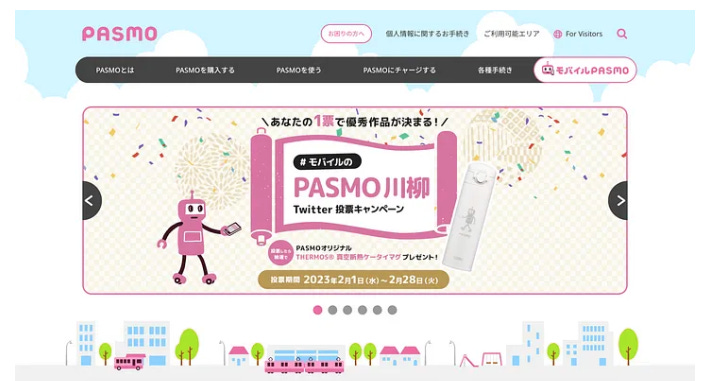How to localize decision intelligence products: An interview with Julia Diez 🌏
When it comes to decision intelligence products, location and locale matter
Hello again, friends 👋🏻
This time, we have a special guest on Signal to Product.
I’m chatting with
, a product localization expert and the author of the Build Local, Ship Local newsletter. Our conversation will be about decision intelligence products in the context of localization.We’ll chat about the things to think about when you design and develop decision intelligence products for different cultures and locales.
Different cultures have different mental models when it comes to consuming data and information, and it’s important to think about these things before you start developing your product, especially if you want your products to go global.
Ready to dive in? Let’s get started.

Julia, tell us a little bit about yourself and the work that you do.
Hi! I’m Julia. I work at the intersection of localization, internationalization, and AI, helping global companies ensure their products and content feel native wherever they land.
By day, I’m a Software Engineer at McAfee, where I focus on building tools and systems that make global content smarter, safer, and faster to deliver. With a background in both linguistics and technology, I specialize in designing AI-powered localization workflows, managing multilingual terminology, and making sure product experiences resonate across cultures.
You’ll often find me untangling messy translation memories, building custom GPTs for localization teams, or writing about how language, culture, and code shape global user experience.
Let’s talk about how different cultures interpret data. What are some general things to think about?
Think of it like selling an electric toothbrush—you can’t just ship it globally without adapting the plug. Different countries have different sockets and voltages, and if you ignore that, it won’t work. The same idea applies to data formatting in software.
Different cultures interpret and expect data to be presented in specific ways. For example, date formats: in the US it’s month/day/year, while in most of Europe it’s day/month/year, and Japan might start with the year. If your product displays a date like 04/07/2025, people in the US will read it as April 7th, while in Spain it’ll be July 4th. That can lead to confusion or worse, mistakes.
Same goes for numbers. A US user expects 1,000.50, while in Germany or France, it's 1.000,50. Even currency placement and spacing change by region. Addresses, phone numbers, name order, every detail needs to be adapted to feel local and usable.
So when we talk about internationalization, it’s not just about language, it’s about the entire user experience, and making sure the product “plugs in” correctly wherever it lands.
What are some common causes for confusion when it comes to developing information and insight products for different cultures?
One of the most common causes of confusion when developing information and insight products across cultures is assuming that logic and data visualization are universally understood the same way—they're not.
That’s why it’s not just about adapting the code to support different cultures—it’s about designing with a global mindset from the start. Sometimes that means building flexible systems, and other times, being open to using entirely different UX patterns or templates per culture. I actually wrote about this in a collaborative piece with UX designers and strategists—you can check out the post here.
For example, color symbolism can completely change how data is interpreted. In Western cultures, red often signals danger or loss. But in China, red is associated with luck and prosperity. So if you're designing a dashboard that highlights financial losses in red, Chinese users might not get the same sense of urgency—it could even seem positive.
Another mind-blowing one is map orientation. Most Western users are used to North being “up.” But in traditional Māori maps of New Zealand, South is at the top. Or in some Middle Eastern cultural contexts, East may be considered the top. So even a simple heatmap or geo-report can feel disorienting or misleading if it doesn’t respect regional spatial norms.
There’s also a difference in data grouping logic. In the West, we often organize information in linear flows or hierarchical category trees—prioritizing clarity and structure. In Japan, UI design often embraces a more circular or holistic approach, where information is grouped in clusters that feel organic rather than strictly ordered. What feels intuitive in one culture may seem overwhelming or chaotic in another.
Adding to this is the influence of kawaii—a cultural aesthetic rooted in cuteness, friendliness, and emotional warmth. This often translates into playful icons, rounded shapes, pastel colors, and character-driven visuals in Japanese interfaces. It’s not just decoration—it’s a deliberate way to make digital spaces feel more approachable, human, and emotionally engaging.
A perfect example of Japan’s rounded UI and kawaii aesthetic—this PASMO site blends soft curves, pastel tones, and a friendly robot mascot to create a warm, approachable user experience that feels more like a storybook than a transit card service.
Japanese users often perceive detailed and information-rich designs as more supportive and trustworthy than overly simplified ones. While the variety of ad banner styles on a homepage can make visual control challenging, each serves a clear and distinctive purpose. Attention to detail is key—almost sacred—as if every element holds significance. Banners are sometimes displayed in portrait orientation, taking advantage of the ability to write vertically in Japanese, which adds an extra layer of design flexibility.
This side-by-side of the U.S. and Japanese Starbucks homepages highlights a core design difference: the Western site leans into minimalism and whitespace, while the Japanese version embraces vibrant density—offering more visuals, sections, and micro-interactions to guide users through a richer, more layered experience.
And let’s not forget number formats—a classic but still deadly one. If you display "1.000" in the US, that’s one. In Germany, it’s a thousand. Now imagine launching a product that tracks COVID-19 cases or investment data and showing “1.000 infected” in the wrong format. That’s a UX failure with real-world consequences.
All of these examples come down to the same principle: if you don’t localize the lens, you distort the view. And that’s a risk for any insight product that aims to inform or guide decision-making across cultures.
Let’s talk about the supply side of data. What do data collectors need to think of when they collect data from different cultures?
When we talk about the supply side of data, especially for AI, one of the biggest challenges is cultural bias baked into the data we collect.
AI models are only as good as the data they’re trained on, and that data is never neutral. If your training set is heavily weighted toward one culture’s norms, language, and behaviors, you’re essentially teaching the AI to see the world through that cultural lens.
For example, an AI trained on English-language content from the US might assume that expressing confidence means being direct and assertive. But in Japanese or Finnish cultures, communication tends to be more indirect, and humility is valued. If you're collecting user feedback or tone for sentiment analysis, the AI might completely misread politeness as a lack of enthusiasm or even negativity.
Even something as simple as image recognition can be skewed. AI trained mostly on Western faces struggles to correctly identify facial expressions on people from other ethnic backgrounds. That’s not just a bug—it’s a consequence of underrepresentation in the training data.
And cultural context changes how data is generated in the first place. In countries where privacy is a strong cultural value, people may give less personal information or interact differently with surveys and platforms. In other countries, hierarchical cultures might lead to data that overrepresents approval or compliance—people saying what they think they’re supposed to say, not what they truly believe.
So if you're collecting data globally, you can’t just scale one method. You need to design culturally-aware collection mechanisms that respect local norms and actively diversify your datasets to avoid reinforcing dominant cultural patterns.
Because if we don’t fix the input, we can’t trust the output, and biased data will only lead to biased AI decisions, reinforcing inequalities across markets.
How can culturally diverse data help create better information and insight products?
Culturally diverse data is essential if you want to build insight products that actually resonate globally. It’s not just about fairness or inclusivity—it’s about accuracy, relevance, and market fit.
When your data reflects a range of cultural perspectives, behaviors, and communication styles, your insights become more nuanced. You start to see patterns that would otherwise be invisible. For example, let’s say you're analyzing customer churn. In one culture, people might cancel subscriptions after a single bad experience. In another, they might just silently disengage but stay subscribed. If your data only reflects one behavior, your model’s conclusions—and interventions—will miss the mark.
It also helps prevent AI tunnel vision. Diverse data challenges assumptions baked into Western-centric systems and forces us to build more adaptive, context-aware tools. That means everything from sentiment analysis to UX recommendations gets smarter.
And there’s real business impact. With culturally diverse data, you can tailor your messaging, your product features, even your rollout strategies. You’re no longer guessing—you’re building from a foundation of insight that reflects how people actually think, feel, and behave around the world.
So, in short, culturally diverse data doesn’t just make products more inclusive. It makes them smarter, sharper, and ultimately more successful.
Can you recommend the readers some specific technical solutions to tackle localization challenges in their work (e.g., libraries, etc.)?
That’s an easy one—I actually wrote a post about my favorite i18n libraries and why I like them. At the end of the day, it really comes down to choosing the one that best fits your tech stack and development workflow. There’s no one-size-fits-all, but the right match makes implementation and scaling much smoother.
If you had a magic wand, how would you use it to make any information or insight product perfectly fit into any culture?
If I had a magic wand, I’d give every product the ability to listen before it speaks: understand the cultural norms, expectations, and preferences of each user, and adapt in real time. True localization, baked into the core.
Where can my readers learn more about your work and connect with you?
In real life, you’ll usually find me by the sea—either in Cork, Ireland or along the northern coast of Spain.
As an online persona, I pop up on LinkedIn now and then—but these days, my real focus is on documenting my professional journey (and AI-fueled experiments in localization) over on Substack. My newsletter, Build Local, Ship Global, is where the behind-the-scenes action really happens.
If you know anyone who works on decision intelligence products or is interested in this space, invite them to subscribe to Signal to Product at this link (signaltoproduct.substack.com) or share this post with them.
If a friend sent it to you and you’d like to learn more about this fascinating space of decision intelligence products, subscribe for free to Signal to Product now to get my articles, case studies, and more directly to your inbox.
©Yaron Cohen - 2025









Thanks, Yaron! That was pure craic altogether
Insightful read! I’m recently learning / writing about this topic, so this is perfectly timed! Thank you for sharing this.